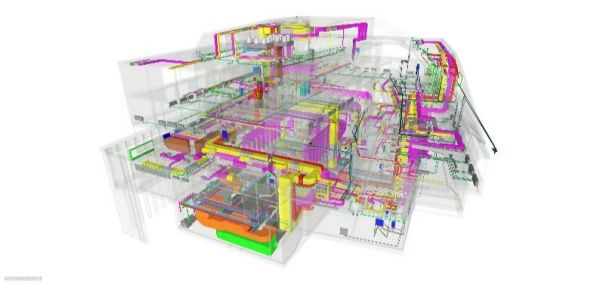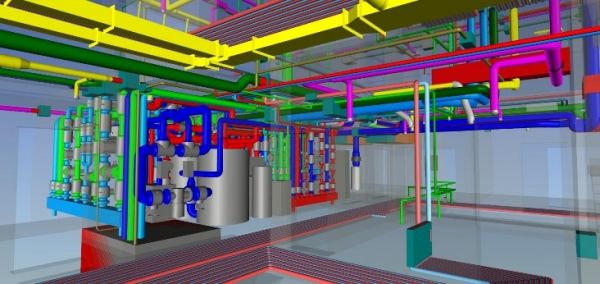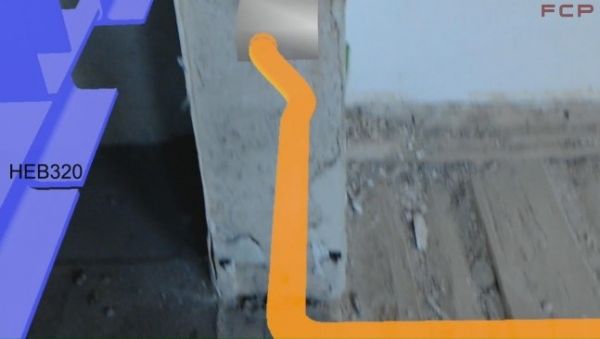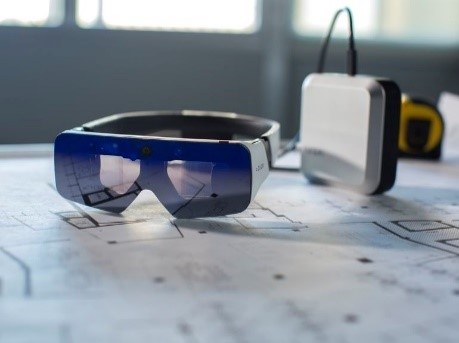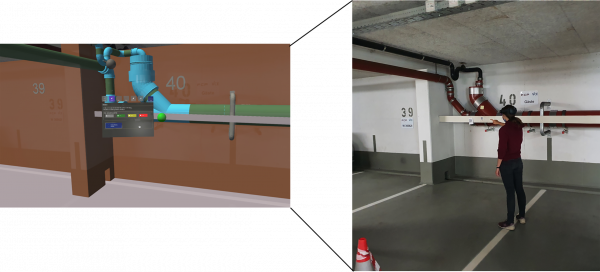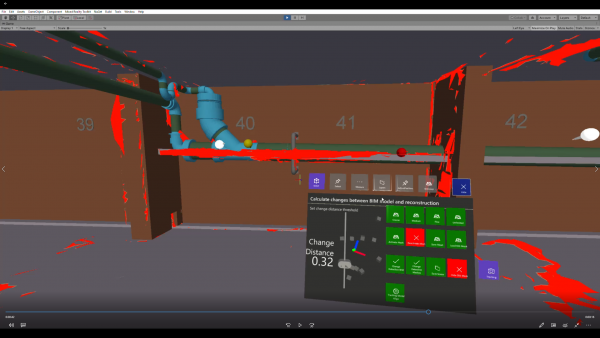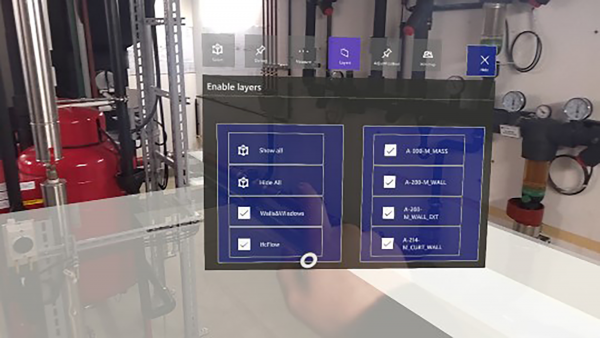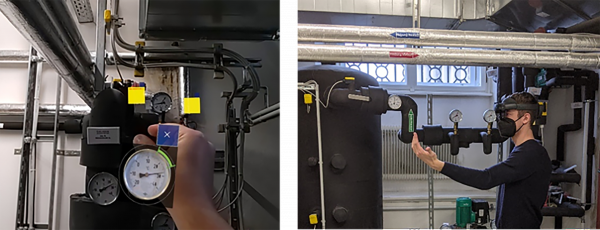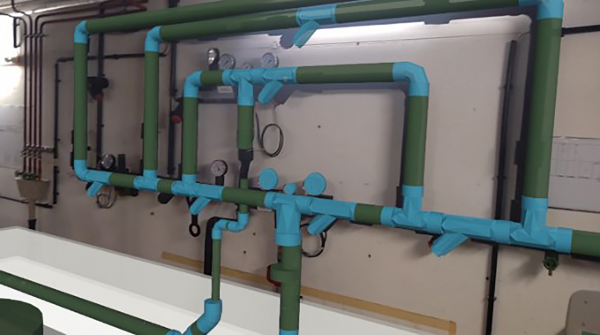AR-AQ-Bau - Use of Augmented Reality for acceptance and quality assurance on construction sites
Short Description
Status
completed
Starting point / motivation
To date, the construction industry has been one of the sectors least affected by digitization. At present, construction progress control, function checks, and inventories are mostly still carried out manually. A special case is building services (HVAC) in construction; it has become increasingly complex and is responsible for up to 35 % of construction costs. With the increasing use of Building Information Modeling (BIM), other technologies are following (step by step), such as augmented reality (AR), virtual reality (VR), artificial intelligence (AI), etc. (also called Construction 4.0). Many studies already highlight the potential added value of using AR. Therefore, the project AR-AQ-Bau focuses on the acceptance control and remote support of HVAC systems using augmented reality.
For widespread use of AR on construction sites, there was a need for research among the available AR systems in 2018. There were a few reasons for this. At that time, data could be transferred from the BIM model to the AR model, but not back again. This is especially important for quality and progress control. Conditions on construction sites (sunlight, dust, same-colored surfaces with few recognition features) make it difficult to locate the position (tracking) of the AR glasses as well as the virtual AR model more accurately over longer distances. There are still few user interfaces specialized for construction – and these only for tablets and not for AR glasses, which are more suitable for construction site use due to their better usability for this purpose.
Two examples of complex HVAC-Systems from pilot projects in BIM:
Contents and goals
The project AR-AQ-Bau is developing an advanced AR system for the acceptance control of HVAC systems in the field of building services. In construction, the BIM model is the central data model; all information of the BIM model should be available for all parties involved in the construction process and, for the first time, be kept continuously up-to-date in a closed-loop approach. This so-called "closed-loop data communication" enables construction progress and as-built inventories to be marked in the AR model on the construction site and, thus, kept up to date. The project focuses on interaction options for transferring comments, images, and new component information to the AR model and then feeding them back into the BIM model ("closed-loop"). As a result, this information is available to everyone involved in the construction process at all times. With a remote expert system, external experts can be connected to support the execution control and create holographic elements (3D elements, images, marking). These functions lead to an increase in the quality of the completed structures, as errors can be identified and worked on together. The people do not all have to be on construction site in the process. While initial positioning of the AR model works quite well on construction sites, reliable tracking of the AR glasses as well as the AR model in the construction site environment is another challenge. The tracking systems currently available cannot cope with the difficult conditions on construction sites and must therefore be adapted accordingly.
Methods
The first step was an application and requirements analysis of augmented reality in the design, construction, and operation phases – with a focus on the construction phase. Then, with the support of experts, the project team determined the necessary requirements for tools, tracking, layouts, and workflows for HVAC acceptance control and for the remote expert system. The project team implemented these in the AR quality assurance tool in the next step. Construction experts (e.g., local construction supervisors, technical planners, students) tested all developments (including data exchange, tracking, remote expert system, layouts) under practical conditions in laboratories and on construction sites (including the Future Art Lab and the subway station "An den alten Schanzen"). In the process, the project team evaluated, among other things, the suitability for construction sites, the accuracy of the tracking system, the setup time of the AR model, the change in documentation, user satisfaction, a possible increase in the quality and energy efficiency of buildings on the construction site. The results were again incorporated into a further development of the AR tool software. Here, the project combined research expertise from construction operations, AR, BIM modeling, and international engineering experience.
Results
The results of the application and requirement analysis show the wide range of possible uses of AR in the construction site context, with the experts seeing very high potential in construction inspection and defect recording. Additional interest was aroused by the possibility of displaying component information and collisions with components still to be installed, including maintenance space. The project team developed an optimized menu path for the user interface for entering defects in the HVAC system. The developed defect classification is based on the important IFC classes and fits ideally into the BIM model. The implemented closed-loop BIM exchange service allows data to be fed back into both the BIM model and a facility management database, thus supporting building operations. Investigations of the newly developed tracking methods in a real construction site environment showed significant improvements in the localization of the AR glasses and the AR model during long-distance movements. This enables the use in many construction site situations. The developed remote expert system for AR communication between construction site and remote experts could be extended by essential functions. This mainly concerns the interaction possibilities. An essential basic requirement for the use of the remote expert system is a stable and very good Internet connection. Unfortunately, this is still not the case in all areas of construction sites. Sometimes communication and interaction were interrupted in the construction site tests. For the satisfactory use of the AR remote expert system, there is still a need for development in the network technology.
Augmented reality is a technology that can bring the benefits of using BIM to the construction site. Many processes can be simplified and optimized. The advanced AR system developed in this project for the acceptance of HVAC systems in building services is an important step in this direction. Further developments based on this system can drive the widespread use of AR in construction. In addition to the pollutant savings predicted by eliminating the need for trips to the construction site, other benefits in the use of AR became apparent during the COVID-19 pandemic. The remote expert system allows experts to be connected remotely, which means that fewer personnel are needed directly at the construction site during on-site inspections and travel to the site can be reduced.
Project Images
Terms of use: The pictures listed underneath the header “Project Pictures” originate from the projects in the frame of the programmes City of Tomorrow, Building of Tomorrow and the IEA Research Cooperation. They may be used credited for non-commercial purposes under the Creative Commons License Attribution-NonCommercial (CC BY-NC).
Project Partners
Project management
TU Wien IBPM, Institute of Interdisciplinary Construction Process Management, Construction Process and Methods
Project or cooperation partners
- FCP Fritsch, Chiari & Partner ZT GmbH
- TU Wien IMS, Institute of Visual Computing and Human-Centered Technology, Interactive Media Systems
- ARIOT OG
- Daqri Holographics GmbH & Co KG
Contact Address
DI Harald Urban
Karlsplatz 13/234-1
Tel.: +43 (1) 58801-23419
E-Mail: harald.urban@tuwien.ac.at
Web: https://www.ibb.tuwien.ac.at/home/

